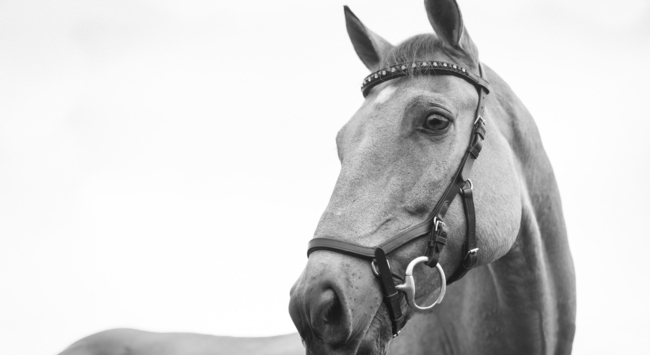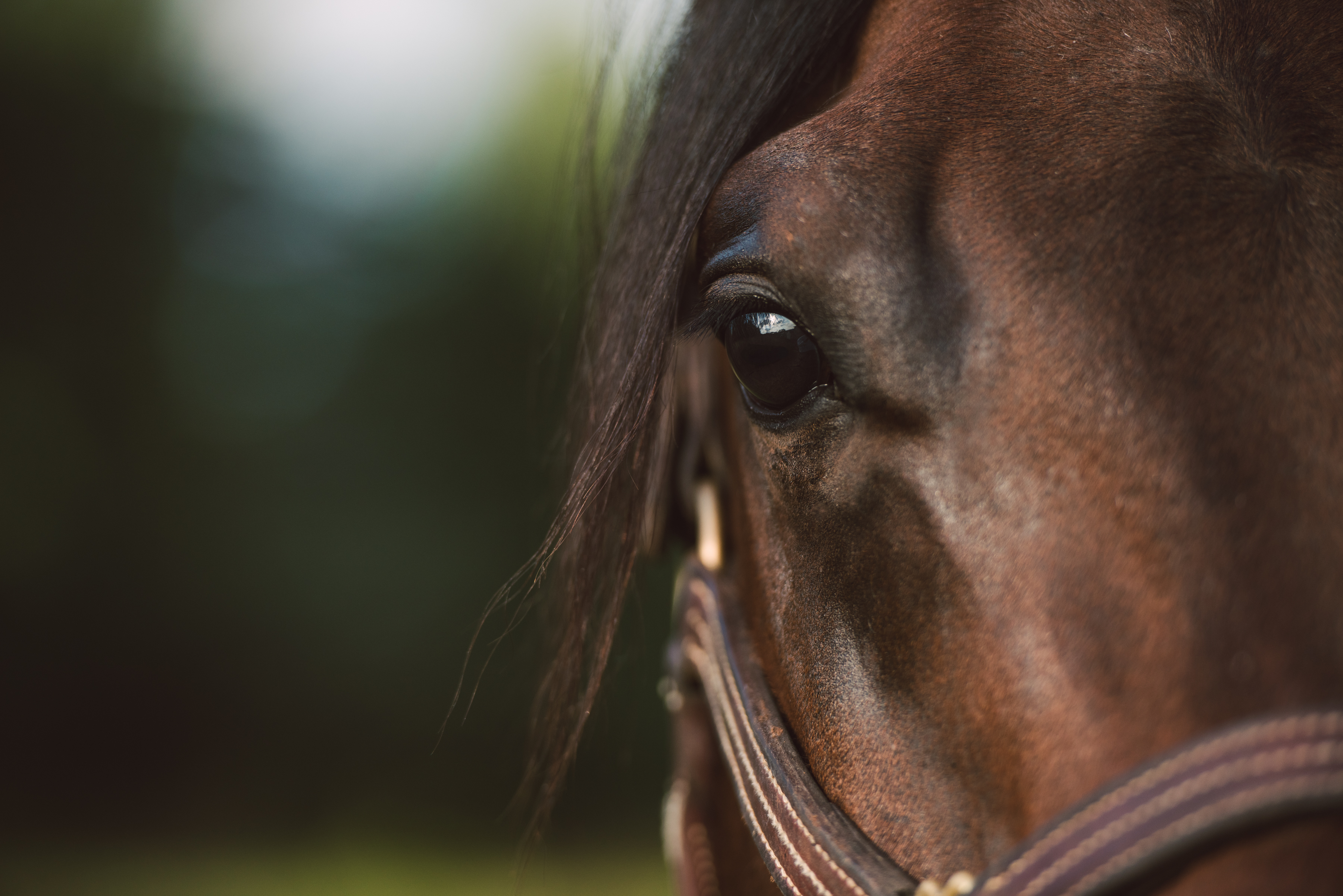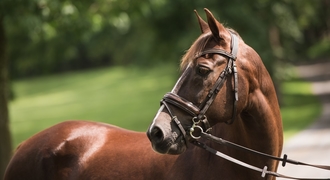
Distilling The Facts About Horses' Kidneys
Your horse’s kidneys do a phenomenal job, processing around 45 litres of blood twice each hour, to filter out waste and reta...
16 December 2019
Read More
As prey animals horses have evolved to be on the constant look out for danger. Their eyes are large and laterally positioned, providing a panoramic field of vision to help them scan for potential predators. The down side is that the size and prominent location of the equine eye makes it highly susceptible to damage.
Eye damage = emergency
Most problems involving the equine eye should be treated as a veterinary emergency. Damage caused by disease or injury can advance rapidly, causing severe pain, which may ultimately compromise or completely destroy vision.

Structure of the equine eye
The eye is a fluid filled sphere connected to the brain via the optic nerve. The clear surface of the eye is called the cornea and the internal coloured part is the iris, which comprises a thin ring of muscle. This enables the central pupil to open or close to regulate light entering the back of the eye through the lens and onto the retina where images are formed. Inside, the part of the eye in front of the lens is the anterior chamber, which is filled with a thick clear fluid known as aqueous humor. Behind the lens is the posterior chamber, which is filled with a clear jelly-like substance called vitreous humor.
To manage your horse’s health routine – try our HorseDialog mobile app
Special protection
The horse, like a number of other animals, has a special protective structure for its eyes in the form of a third eyelid. This membrane can automatically move over the eye from the inside corner to the outside corner to help shield the eye from potential trauma.
Four common equine eye problems
Eyelid damage is common and prompt surgical repair is imperative to prevent a malfunctioning eyelid and further damage involving they eye itself.
Corneal ulcers are very common, usually caused by trauma, flies or foreign bodies such as grass seeds. Such irritation can result in a break of the thin outer membrane of the cornea, allowing bacteria to enter and cause further damage. Corneal ulcers can be difficult to spot. Early signs include a weepy eye and mild pain. This may manifest as a slightly closed eyelid, which can be easily missed. The vet will usually check for ulceration by using a fluorescent dye to stain the surface of the eye to make any irregularities on the surface of the cornea more visible. The horse can then be treated according to the type of injury found.
Equine Recurrent Uveitis (ERU) is another common eye problem and is sometimes called Moon Blindness or Night Blindness. It’s a chronic inflammatory disease involving the internal structures of the eye and is the most common cause of blindness in horses. Prompt diagnosis is very important for treatment to be successful.
Cataracts are often seen in horses. A cataract is a clouding of the eye’s lens, which lies behind the iris and the pupil and can cause partial or complete blindness. Injury and ERU are common inciting causes of cataracts but they can also be congenital, particularly in some breeds such as the Morgan horse. Like people, older horses can develop mild cataracts too.
Check eyes daily
It’s good practice to check your horse’s eyes every day so that you can quickly spot any problems. It’s also a good idea to get your horse used to having the area around his eyes handled so that if any treatment is ever needed it will be easier for your vet and less distressing for your horse.
Signs to watch out for
Always call your vet if your horse has an injury in or near an eye – you can never, ever be too careful.
http://thalequine.com/the-equine-eye-what-horse-owners-should-know/
https://thehorse.com/16441/eye-anatomy-and-physiology/
http://www.horseandhound.co.uk/horse-care/vet-advice/the-horses-eye-39224

Your horse’s kidneys do a phenomenal job, processing around 45 litres of blood twice each hour, to filter out waste and reta...
16 December 2019
Read More
On average a horse’s brain is the size of a large orange but weighs significantly more at roughly 623g and it is around half...
19 July 2019
Read More